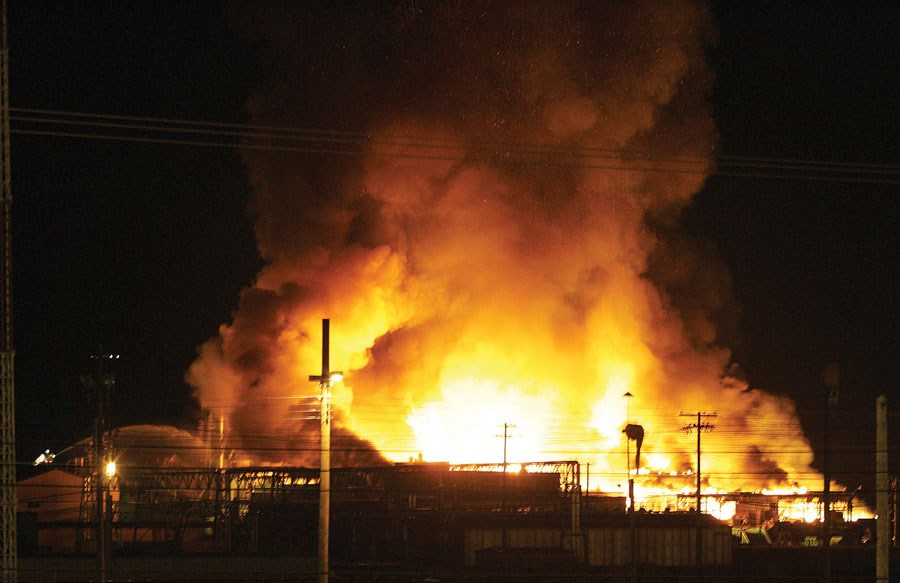The coroner's inquest into the deadly Lakeland Mills explosion heard further detail Monday about a "near miss" that occurred about three months before the incident that leveled the operation, leaving two employees dead and 22 injured.
Shift supervisor Bob Sutton was walking along a catwalk on Jan. 19, 2012 when a saw came off the large headrig and created some sparks that ignited the fine, flour-like sawdust that came from the dry, beetle-killed pine the sawmill was processing.
"It happened so quick, there was just a poof of dust and it ignited from the spark and it was over just as quick as it happened," Sutton said.
It is common in sawmills for saws to create sparks when they come off, but this was different.
"It wasn't a fire on the floor, it was a fire in the air itself," Sutton said.
Sutton was about 40 feet away when it happened. He rushed over with a fire extinguisher and sprayed it on large headrig operator Glenn Roche - one of the men who would die from the severe burns they suffered in the April 23, 2012 blast - and small headrig Brian Primrose as they out spot fires from the burst down below.
Sutton estimates it went about 30 feet into the air but agreed as much as 50 feet was possible.
The incident occurred just a day before the explosion that destroyed Babine Forest Products near Burns Lake, killing two workers and injuring 20 more.
WorkSafe determined that sawdust from beetle-killed pine was the fuel in both explosions.
In earlier testimony, WorkSafe B.C.'s lead investigator into both incidents said the Jan. 19, 2012 incident at Lakeland could have been much worse, possibly on the scale of Babine and the one at Lakeland that was to follow, if there had been enough confinement.
Sutton said he and Roche talked about what happened "every day."
"Glenn was really upset with the state of the mill and he was constantly asking me to do something about it," Sutton said. "We had been friends for many years and worked together for a long time and he felt that if anyone could do something about it, it was me."
But Sutton said all he could do was ensure incidents were documented.
"If it's not written down, it doesn't happen - that's what we're always practicing," he said.
Sutton said he believed Al Little, the other man who died in the explosion three months later, was also at the scene.
"I didn't see him but apparently he had come up the stairs underneath where I was on the catwalk and he was right there," Sutton said. "I don't know if he'd actually seen the fireball itself but he was there right at the end of it."
Sutton signed off on a subsequent investigation Lakeland supervisors had conducted although he did not recall actually participating in the investigation. He thought Little, who was also a supervisor at the mill, carried out that work.
However, Sutton said he did provide a proposal to improve cleanup at the mill in February 2012 following a visit from two WorkSafe inspectors that involved changing some shift times but did not require hiring more employees. Whether it was implemented or not, Sutton could not say, but he "didn't see much of a change."
Sutton agreed with Lakeland counsel that the mill tended to be dirtier towards the end of the work week but added that Monday was an exception because the mill would have run continuously over the weekend with very little time for cleanup between shifts. The blast that struck Lakeland occurred on a Monday shortly after the 9:30 p.m. lunch break had begun for the afternoon shift.
Sutton, who remains a supervisor at Lakeland, was off shift on the day of the explosion.



